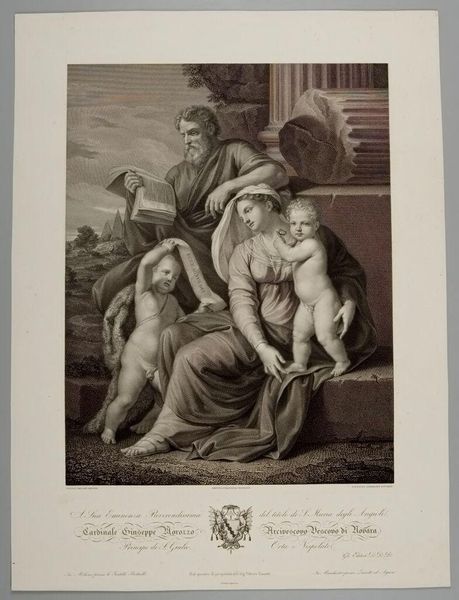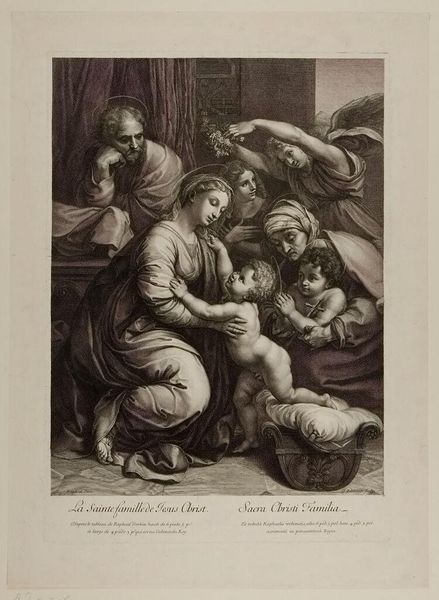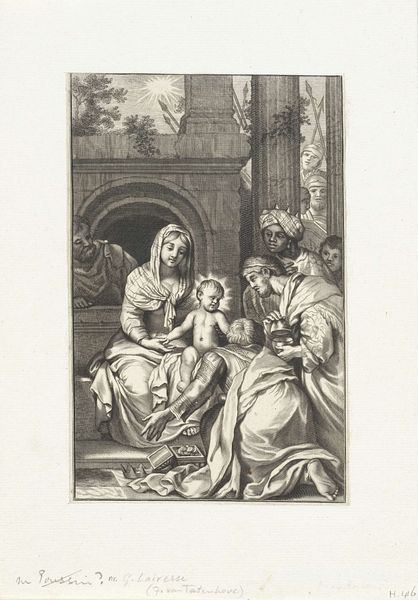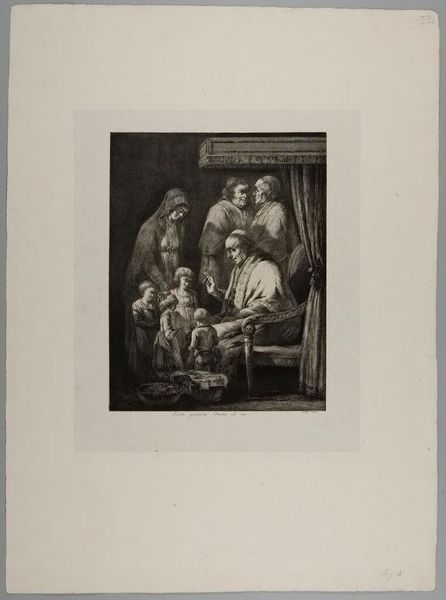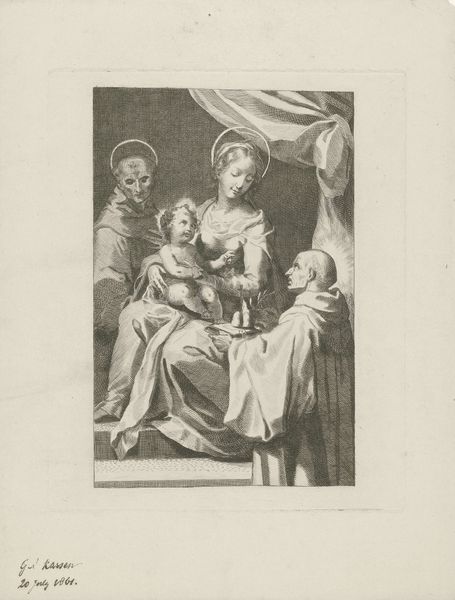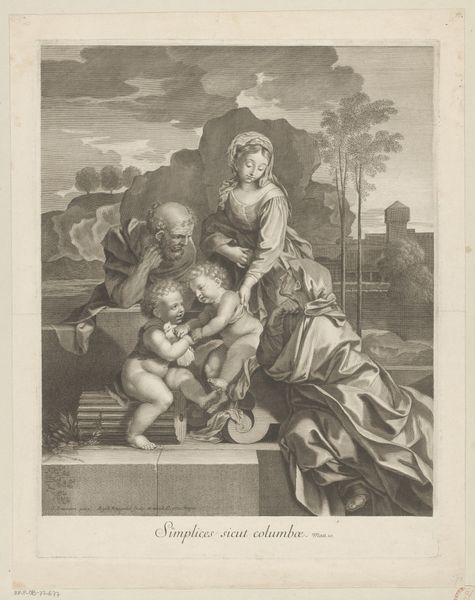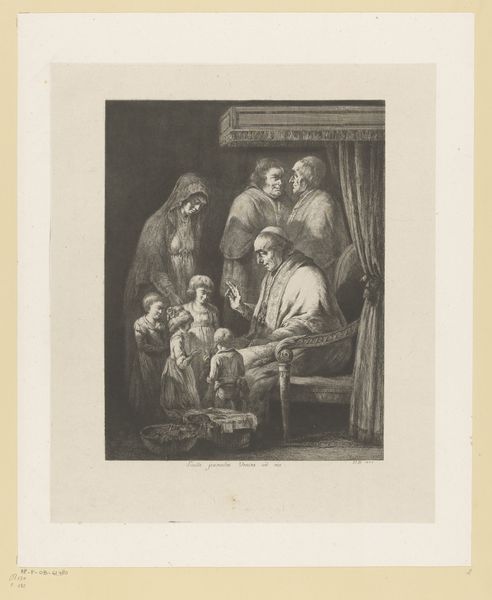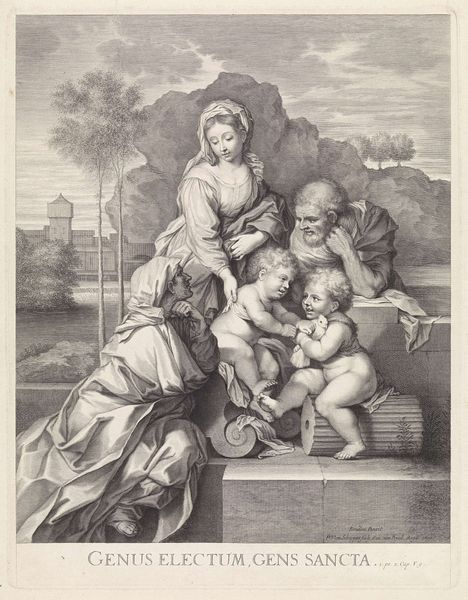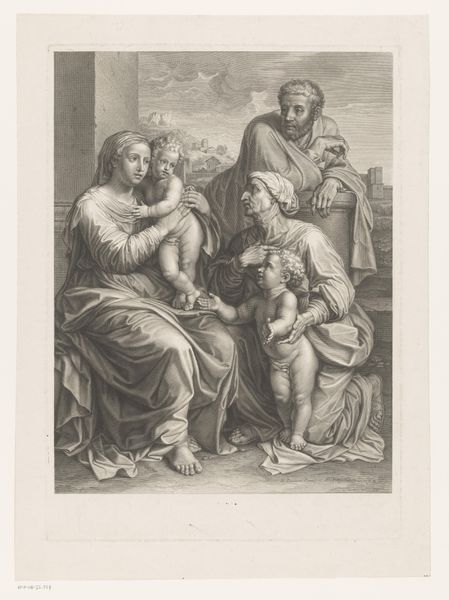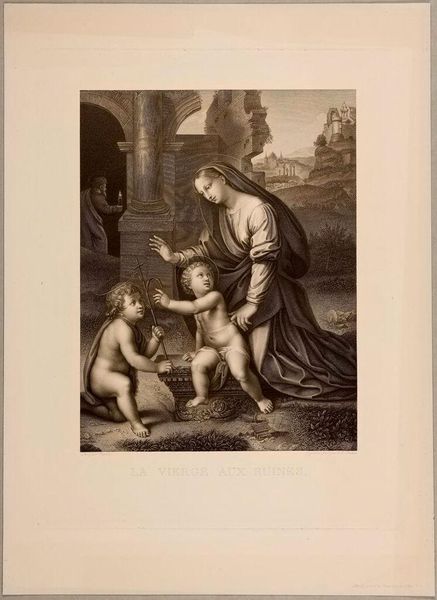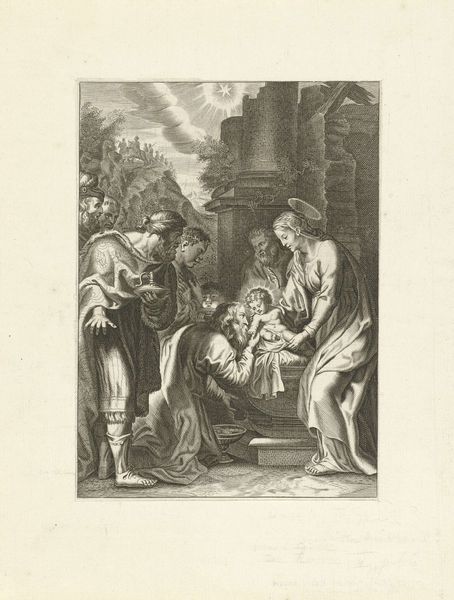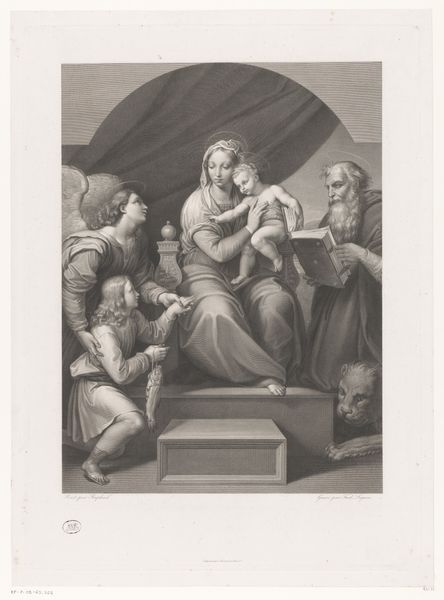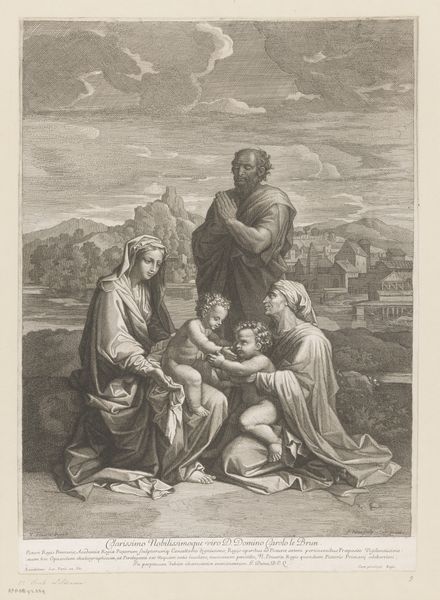
print, engraving
# print
#
old engraving style
#
classical-realism
#
figuration
#
group-portraits
#
line
#
genre-painting
#
history-painting
#
engraving
#
realism
Dimensions: height 622 mm, width 465 mm
Copyright: Rijks Museum: Open Domain
Editor: Here we have Faustino Anderloni's engraving, "Holy Family with the Young John the Baptist," created sometime between 1776 and 1847. The lines are incredibly precise, giving it almost a photographic realism despite the classical subject matter. I find it rather serene, almost frozen in time. What strikes you about this piece? Curator: Frozen in time, yes, a poignant observation! For me, it's the dance between the classical ideals it strives for and the inherent humanity that bleeds through. Anderloni, though working within the established visual language of religious art, hints at something more… intimate. The slight downturn of Mary's lips, the almost distracted gaze of Joseph. Do you feel that hint of melancholy too? Editor: Absolutely! They seem very present, but preoccupied. There’s a story just beneath the surface of pious representation. What does that tension, between the ideal and the real, tell us about the work? Curator: Perhaps that’s Anderloni's quiet rebellion. Or perhaps it's the truth seeping through. The "Holy Family" becomes just a family. I'm thinking particularly about the weight of expectation – what that must have been like for them. I like how the figures touch and interact, suggesting their inner-most bonds and how it feels to trust, love and sacrifice. Do you think this is why it feels so human? Editor: Yes, definitely. Seeing them not as untouchable icons, but as people dealing with…well, life… it completely changes the dynamic. I'm noticing that it feels even more relevant today. I'll be looking at art with a whole new perspective! Curator: Indeed. It's in these subtle subversions, these quiet whispers within grand narratives, that we find the most enduring connections. It goes beyond history; we are getting to see, and feel, who they were.
Comments
No comments
Be the first to comment and join the conversation on the ultimate creative platform.
